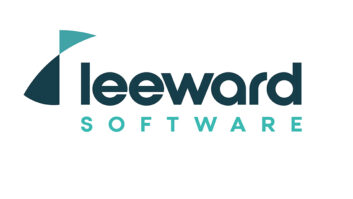The author is senior vice president of products and marketing at Abacast.

Jim Kott Much has been written lately about cloud-based services and the benefits they are providing businesses and consumers. Abacast, a provider of online audio streaming and monetization services since 2001, has recently released its “cloud-based ad insertion” technology. Here is an overview of the technology and a few ideas about how it can benefit the radio industry as it continues to invest in digital delivery.
Cloud-based ad insertion enables live broadcasters to provide advertisers with different ways to target audiences, no matter what player or device those audiences are using to consume content.
Inventory CPM rates for targeted ads are typically 50-to-100 percent higher than non-targeted ads, and because advertisers are only reaching the audiences they desire, ad inventory tends to be much easier to sell.
With cloud-based ad insertion, a user listening to a live stream can receive a certain in-stream ad while a person listening to the same live stream — on a different device in a different location, or of a different age or gender — can receive a different ad, inserted right into the same live programming.
TARGETING OPTIONS
Common audience targeting options include audience geo-location, player or device, and any data that broadcasters collect about their audience, such as age or gender or even favorite food. Examples of target audiences that can be reached include “all smartphone listeners,” “all listeners in the top 20 DMAs that are on desktops,” “all listeners in the Eastern US regardless of device,” “all male listeners in the 25–34 age range in a group of Zip codes,” “all listeners listening on the TuneIn player,” “listeners in the South who say they like ice cream” and of course many more.
HOW IT WORKS
With cloud insertion, in-stream ads are inserted on the server side right into the content and therefore sound like they are part of the broadcast. When the encoding of the ads matches the content, it’s virtually impossible to tell a broadcast ad from an inserted online ad.
One key aspect of cloud-insertion is that it utilizes what is called “chunk-based delivery.”
Chunk-based delivery converts video or audio streams into discrete files that are two-to-10 seconds in length and distributed using HTTP. The Internet is built to deliver content via HTTP on a massive scale. Apple’s HTTP Live Streaming (HLS) and Adobe’s HTTP Dynamic Streaming (HDS) are examples of chunk-based delivery implementations.
It’s safe to say that all streaming will be moving to these “chunk-based” technologies, opening up new possibilities for targeting, increased revenue, decreased costs and more partnership opportunities.
IMMEDIATE TARGETING WITH NO CLIENT TARGETING CODE
Even with the exploding number of new mobile and other connected devices — it feels like new gadgets come out every week — broadcasters can serve targeted audio or video ads to these audiences immediately. There is no lag time or development cost to create special targeting code for the new device. Rather, targeting is supported immediately through the player’s built-in HLS or HDS support.
MORE REVENUE, LOWER COSTS
On the revenue side, because advertisers pay more to reach the audiences they want to reach, and because cloud-insertion provides the ability to target discrete audiences, broadcasters will realize higher CPMs and thus more overall revenue.
On the cost side, because the content is distributed via standard HTTP, any Content Delivery Network works as a conduit. Broadcasters can shop for the best CDN based on price, reliability or other factors. Currently Abacast’s cloud-insertion is used on three different CDNs — Abacast’s, Amazon and Akamai — with more to come.
Advertising inside live streams now has the capability to be completely dynamic, based on audience characteristics that include geo-location, device, player, demographics and even the service that the listener uses (i.e. aggregator, portal, media guide, etc.). Targeted cloud-based ad insertion technologies will be an imperative driver for increased revenue as we continue to see consumers using many different devices to consume content at the time and place of their choosing.












